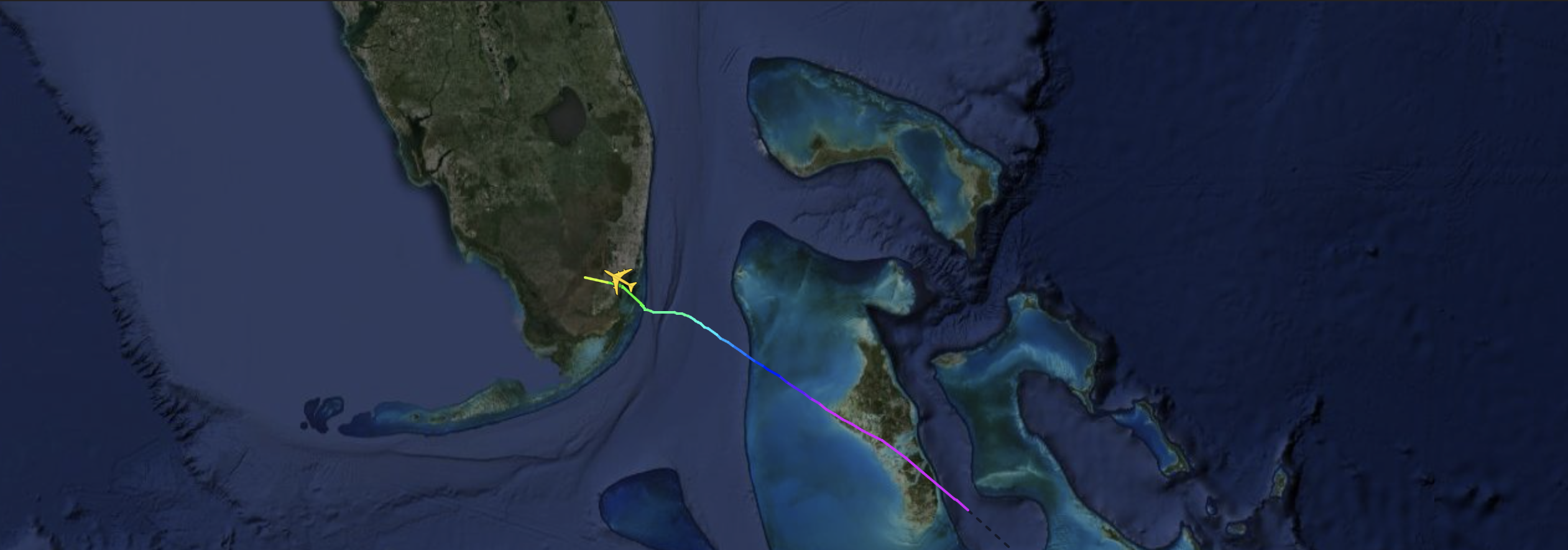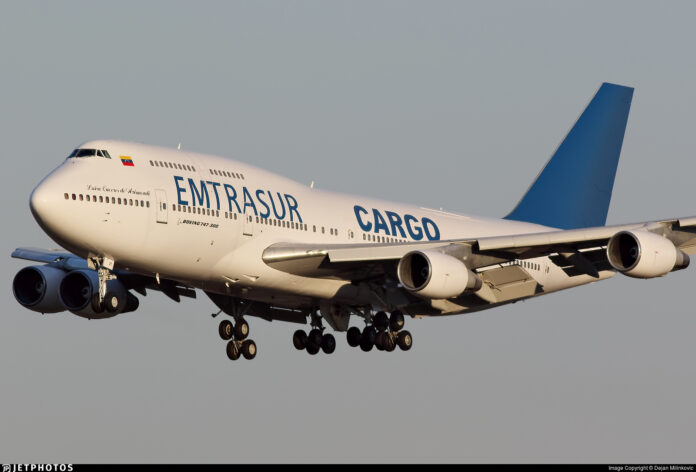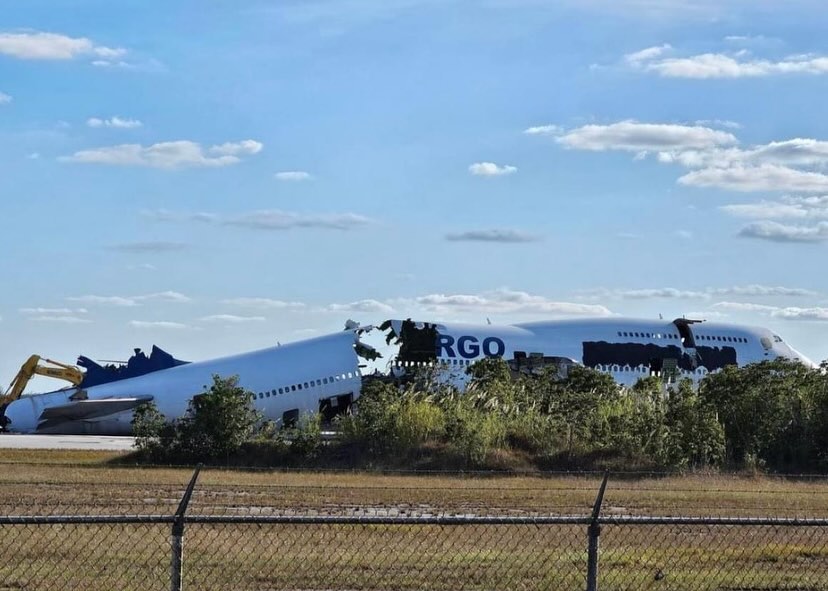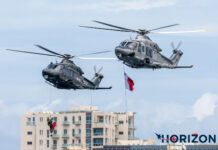Emtrasur Airlines
Emtrasur Airlines, established by the Venezuelan government in 2021, serves as a vital conduit for cargo transportation linking Venezuela, China, and Iran. Its headquarters are situated at Maracay’s El Libertador Air Base. Originally named Empresa de Transporte Aerocargos del Sur, it operated as a subsidiary of CONVIASA, with aircraft acquisition completed in October 2021. Emphasizing its commitment to solely freight operations, Emtrasur, hailing from Venezuela, aimed primarily to oversee and regulate postal and air freight movements both domestically and internationally, with a focus on supporting nations like Bolivia, Iran, Russia, China, Belarus, and Paraguay. However, US authorities had persistently suspected alternative uses for the aircraft, including alleged smuggling of firearms and tobacco products, suggesting occasional deviations from legitimate cargo transport.
The inaugural aircraft for Emtrasur, a notable addition to the cargo carrier’s fleet, made its public debut on January 23, 2022, during its testing and acceptance flight, adorned with the company’s logo and Venezuelan registration. Captured in photographs, the aircraft revealed its distinguished lineage, a 38-year-old Boeing B747-300M registered as YV3531 (23413). Originally delivered to UTA – Union de Transports Aériens in January 1986, the aircraft subsequently served with Air France from 1992 to 2006, Garuda Indonesia from 2006 to 2007, and Mahan Air, a privately owned Iranian airline based in Tehran, Iran, from 2009 to 2021, while on lease from Blue Airways. Transitioning to Emtrasur’s service in January 2022, the aircraft was configured exclusively for freight operations, continuing its legacy as a cargo carrier.




Iranian and Venezuelan sanctions imposed by the United States of America Government
Iranian and Venezuelan sanctions imposed by the United States of America Government have significantly shaped international relations and economic activities. Since the takeover of the U.S. Embassy in Tehran in 1979, the US has implemented various legal measures to limit its business dealings with Iran. The enforcement of these measures falls under the authority of the Department of State’s Office of Economic Sanctions Policy and Implementation. Despite President Obama’s landmark nuclear deal with Iran in 2015, which lasted for only three years, the subsequent withdrawal of the US from the agreement under President Trump’s administration in 2018 led to the reinstatement of sanctions against Iran. Notably, during the three-year duration of the Obama-Iran nuclear deal, Iran Air managed to receive delivery of one Airbus A321, two Airbus A330s, and 13 ATR turboprops from an order of 118 aircraft.
Similarly, Venezuela has faced targeted U.S. sanctions since 2005, primarily focusing on Venezuelan organizations engaged in illicit, anti-democratic, or corrupt activities. The Trump Administration intensified these sanctions, expanding them to include financial restrictions, sectoral sanctions, and governmental sanctions in response to the administration of Nicolás Maduro, who assumed office in 2013. Consequently, the supply of aircraft parts to both US military and civilian assets utilized by the Venezuelan government or private entities has been significantly affected by these measures.
Mahan Air
Mahan Air, established in 1991 as a Full-Service Carrier (FSC) and commencing operations in June 1992, is reputed to be Iran’s inaugural private airline, deriving its name from Mahan City in Kerman Province. Over the years, the airline has operated a diverse fleet encompassing Airbus A300s, A320s, A340s, Avro RJs, and Boeing 747s. However, in this instance, the acquisition of the aircraft was undertaken without seeking permission from Mahan Air through the stipulated channels. Consequently, despite the aircraft being registered under Venezuelan authority, it was swiftly placed on a “wanted” list by U.S. authorities following its delivery by Mahan Air.
Mahan Air was classified as a supporter of terrorism by the U.S. Department of Treasury on December 12, 2011, for “supplying financial, material, and technological support to the Islamic Revolutionary Guard Corps-Qods Force (IRGC-QF)”.
How do Mahan Air and other Iranian operators bypass the sanctions?
Babak Taghvaee, an Iranian aviation historian, book author, and aviation journalist living in exile, reveals to Key.Aero, the method by which aircraft are acquired in Iran. Essentially, due to the aforementioned sanctions, aircraft are registered in other countries to maintain secrecy. These registrations typically occur in nations like TZ (Mali), TN (Congo), and XT (Burkina Faso). Many question whether these aircraft were registered through proper channels. Recently, Mahan Air also successfully delivered a significant number of aircraft to Iran utilizing a new unorthodox method of “diverting” aircraft to Iran while in flight.
On December 23rd and 24th, 2022, Mahan Air clandestinely ferried XT-AKK, XT-AKB, XT-AHH, and XT-ALM Airbus A340-300s (formerly operated by Turkish Airlines) from South Africa, where they had been stored for several years. Additionally, on December 21st, 2023, they transported four RJ85s (formerly operated by AirLink and stored for over four years) from India to Afghanistan. Two of these aircraft were registered TN-AKP and TN-AKO, while the others remained unidentified.
Furthermore, on May 23, 2023, two Airbus A340-212s previously utilized by the French Air and Space Force (FASF) departed Kertajati International Airport in Indonesia, where they had been stored for over a year. These aircraft were registered as TZ-DTA and TZ-DTC. Mahan Air has also facilitated the acquisition of Airbus aircraft for other airlines, including Ariana Afghan Airlines (A310-300s), Syrian Air, and Conviasa (A340s).
The transfer of EP-MND to YV-3532
The aircraft in question operated for Mahan Air under the registration EP-MND, serving passenger routes between various Iranian cities until 2019. Subsequently, it was stored at Tehran-Mehrabad International Airport. In 2021, during its D-Check, Fars Co. (also known as Fajr Ashian) MARO center converted the aircraft into a freighter. The delivery of the modified aircraft occurred in February 2022.
Argentina-Iran Relations with Caracas and arrival at Cordoba Argentina.
Argentina-Iran relations, coupled with ties to Caracas and the aircraft’s arrival in Córdoba, Argentina, are crucial aspects to consider. The terrorist attacks on the Israeli embassy in Buenos Aires in 1992 and the Argentine Israelite Mutual Association (AMIA) in 1994 significantly strained Argentina-Iran relations, aligning with anticipated political and economic trajectories. On June 6, 2022, the aircraft transported a cargo of auto components for VW from Mexico to Argentina. Given the potential ramifications of supporting an aircraft subject to US sanctions, the local government opted to deny refuelling the aircraft. Consequently, YV-3531 was temporarily grounded, leading to the brief detention of all crew members for questioning. Notably, no official arrests of the crew were made at this time.
Seizing of the Emtrasur B747-300
Two days later, the aircraft filed a flight plan to Uruguay. Departing from Córdoba, while in flight, the government in Montevideo denied landing permission, citing anomalies in the passenger list and an unusually high number of crew members, following alerts from Paraguay. During the flight, Argentine authorities were also informed by their Paraguayan counterparts about irregularities detected in the passenger list, suggesting the presence of individuals of interest aboard the aircraft.
Additionally, concerns were raised regarding the excessive passenger load for a typical cargo flight. Initially intending to divert to Paraguay, the freighter ultimately rerouted back to Argentina due to adverse weather conditions and insufficient fuel reserves. Consequently, on June 8, 2022, it landed at Ezeiza International Airport on the outskirts of Buenos Aires. The aircraft was operated by a crew of twelve Venezuelans, including seven Iranians. Argentine authorities were promptly notified of these anomalies, prompting an immediate investigation.
Further investigations revealed that one of the Iranian nationals appeared to be a member of the Quds Force, a division of the Iranian Islamic Revolutionary Guard. A court injunction rendered the aircraft inoperable. Argentine officials raided the hotel where the crew was staying on June 14, 2022, seizing paperwork, passports, tablets, and other devices.
Agustín Rossi, Argentina’s chief intelligence officer, explained that the coexistence of Iranian and Venezuelan crew members was due to the necessity for Venezuelan pilots to obtain full certification to operate the aircraft, despite Mahan Air having sold it to Conviasa. Israeli sources denied this explanation. Authorities concluded that most Iranian passports were fake and that Fars Air, another Iranian airline supported by the IRGC, actually owned the aircraft, contrary to claims by Emtrasur or Mahan Air. Some were surprised to find the CEO of Fars Air on board the aircraft. A registered pilot of the aircraft was identified by the Justice Department as a former Revolutionary Guard commander. The prosecutor in charge of the case in Argentina, Cecilia Incardona, focused her investigation on Gholamreza Ghasemi, the Iranian pilot, and any potential connections he may have to international terrorism.
Another intriguing aspect of the Emtrasur 747 saga is that, despite Paraguay alerting Argentina and Uruguay about the aircraft’s blacklisting, the same aircraft and pilots had landed in Ciudad del Este, Paraguay, a month earlier to transport tobacco cargo belonging to former Paraguayan President Horacio Cartés to Mexico.
Cpt. Gholamreza Ghasemi was of special interest in this investigation
Captain Gholamreza Ghasemi was of particular interest in this investigation. According to a document released by Incardona’s office, the FBI reported to Argentine federal judge Federico Villena, who oversees the case, that Ghasemi serves as CEO of Qeshm Fars Air, a company the U.S. Treasury Department alleges provides material support to the Iranian airline Mahan Air and the Quds Force of Iran’s Revolutionary Guard. Officials also noted obtaining a flight record indicating multiple trips to Moscow, Caracas, and Tehran following the transfer to Emtrasur, all without permission from the US government. Argentina released all the crew members by September 2022. When Ghasemi’s mobile device was confiscated, it contained images of missiles, tanks, and a flag bearing the inscription “Death to Israel.” Additionally, it was mentioned that experts were still in the process of translating more accurate information. The implications of these findings in light of Ghasemi’s recent terrorist charges are yet to be determined. The US District Court of Columbia granted the US Attorney’s request on October 20, 2022, directing the US government to seize the aircraft. This order was reiterated by the same US court on May 2, 2023, and the Argentine Ministry of Justice was formally requested to comply. Argentina relinquished the quadjet soon after, and preparations for ferrying the aircraft began a few months later.
Iranian and Venezuelan reaction and demand return of Emtrasur B747
Venezuela has demanded that Argentine authorities release the aircraft, while Mahan Air has denied any affiliation with it. Babak Taghvee, speaking under the condition of anonymity, disclosed a statement from a former Mahan Air employee: “Mahan Air still owns the aircraft; Conviasa has merely leased it. Mahan Air has leased other aircraft to both domestic and international airlines in accordance with their air operator certificates (AOCs).”
Argentine Minister of Security, Fernandez Anibal, asserted that the aircraft belonged to Iran, pointing out that Iranian nationals were piloting the Venezuelan Emtrasur Cargo. Diosdado Cabello, first vice-president of the United Socialist Party of Venezuela, also expressed his views, accusing the Argentine government of siding with those who oppress the Venezuelan people. He demanded that the Venezuelan aircraft be returned to Mr. Fernandez’s government as soon as possible, stating, “That plane was not carrying weapons, it was not endangering anyone’s safety; on the contrary, they endangered the safety of the crew by denying them fuel and forcing them to orbit until they ran out of fuel.” However, evidence obtained from the crew’s electronic devices emerged, revealing images of weapon boxes in the cargo hold and in front of the aircraft at an unidentified location.
Iran swiftly criticized the US action. In a brief statement, Ministry of Foreign Affairs spokesman Nasser Kanaani denounced it as “illegal,” stating that it violated the United Nations Charter, and pledged to assist Caracas in regaining possession of the Boeing. He declared, “The Islamic Republic of Iran unequivocally supports Venezuela’s legal and diplomatic efforts to reclaim ownership and access to the country’s possessions and belongings.”
Release of the Emtrasur to the USA
In early January 2024, rumors circulated that Argentina had agreed to transfer ownership of the Emtrasur Cargo aircraft to the USA. On January 4, 2024, Federal Judge Federico Villena approved the release of the aircraft from Buenos Aires Airport to the United States. Throughout this one-and-a-half-year period, the aircraft was continuously monitored by local security 24/7. Without providing specific details, the Venezuelan government characterized the transfer as a “shameful rapacious operation” and vowed to “take all actions to restore justice and achieve the restitution of the aircraft to its legitimate owner.”
On January 4, the Venezuelan cargo operator issued a statement condemning the ruling of the Argentinean court. According to Emtrasur’s statement, “The Southern Aerocargo Transport Company (EMTRASUR), a Venezuelan state-owned company dedicated to the operation of cargo and mail transport services, duly authorized by the National Institute of Civil Aeronautics (INAC), categorically rejects and condemns the arbitrary and illegal decision of the Lomas de Zamora Federal Court, by Judge Federico Villena.”
Emtrasur has asserted its right to file a lawsuit if the company’s legacy is harmed, human rights are violated, or the International Civil Aviation Convention is breached.
Ferrying the B747 to the USA

Regular taxi runs and engine tune-ups were performed to maintain the aircraft’s airworthiness. Finally, the seized aircraft underwent its last preparations for a ferry journey after undergoing a final inspection on February 8 inside a hangar at Ezeiza. Using the callsign “TYSON23,” the aircraft departed from Buenos Aires on February 12, 2024, bound for the Dade-Collier Training and Transition Airport near Miami. The aircraft was ferried by the US Department of Justice. The airport issued a notification stating that it would be closed for the next 24 hours due to “military operations.” The US Justice Department announced that the US-built plane is slated for disposal upon its arrival in Florida. Initially, there was no clarity on how the aircraft would be disposed of; however, FL360aero reported that the aircraft could be used for fire training. All that is certain is that this Boeing 747-300, after 38 years in its native country, has reached the end of the line.
Former Iranian-Owned Boeing Aircraft Successfully Returned to the United States on the 12th of February 2024 – Official Press Release
Emtrasur Cargo #YV3531 aterrizó en el apartado Dade-Collier Training and Transition Airport (KTNT). Dificil el rastreo de las apps por MLAT pero gracias a la ayuda de @thenewarea51 haciendo uso de @liveatc puedo confirmar. El rumor es que EEUU hará exhaustivos tests al avión ☢️ pic.twitter.com/qXq047W0tx
— 𝘼𝙧𝙧𝙚𝙘𝙝𝙤 (@Arr3ch0) February 12, 2024
Conclusion
According to US Attorney Markenzy Lapointe for the Southern District of Florida, successful planning and coordination with Argentine government officials spanning over eighteen months led to the seizure of the quadjet. Lapointe further remarked, “Bad actors – both near and far – are now aware that the United States will utilize all available resources to hold accountable those who violate our laws.” He emphasized, “The successful seizure of the Boeing 747 underscores our unwavering commitment to thwart the illegal exportation of US technologies and enforce US export control laws.”
Regrettably, one of the last surviving Boeing 747-300s in commercial operation was scrapped yesterday, February 28th, 2024, at Dade Collier Training Airport.
Author
This article was authored by Malcolm J. Bezzina, a Maltese aviation photographer. While it was not feasible to include every detail, such as all court proceedings, surrounding the saga of this aircraft, the main points concerning its acquisition, ferrying back, and other significant events were covered. This article relied on various sources of information.









